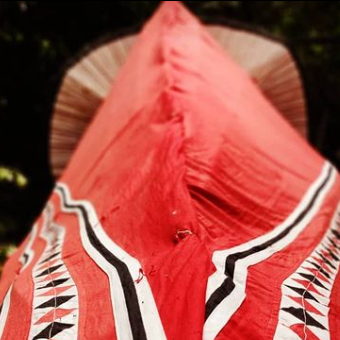Theyyam

Theyyam; Transforming to God from Human
Theyyam is a ritual performed majorly by Hindus in the Northern part of the state of Kerala. It is also known as the dance of gods. It is also known by the names Kaliyattam and Thira and the name varies according to the location it is performed.
Historical and Cultural Significance
Casteism prevailed in ancient Kerala, and the people belonging to the lower caste were not allowed to be viewed by the upper caste, wear upper clothes, or visit the temple. Kerala had some of the worst practices. Upper-class and ruling-class families supported Theyyam; it was basically a Dravidian art form. Theyyam artists are from low-caste communities like Malayan or Vanaan. Even high-caste individuals will be obligated to worship the gods who appear as Theyyam, expressing anti-racial characteristics.
“Theyyam” is a ceremonial practice continued in the Malabar region of Kerala that brings life to the epic stories of the state. It includes dance, mime, and music. Daivam is the source of the term Theyyam, which means god. The Theyyam performer is known as ‘Kolam,’ which depicts divine energy. Kavu in northern Kerala hosts the Theyyam. The devotees and the public are spread around the show or seated nearby.
Theyyam is an example to the youth that Kerala is more than just lush greenery and houseboats in the backwaters. But it is also a place where acceptance and remembrance are valued. There are hundreds of Theyyam rites in the Malabar region, including Raktha Chamundi, Muchilottu, Kari Chamundi, Bhagavathi, Gulikan, Wayanadu Kulaven, and Pottan.
Types of Theyyams












Plan an Unforgettable Experience
in Kannur
We can help you fit your stay and experience
Reach US












